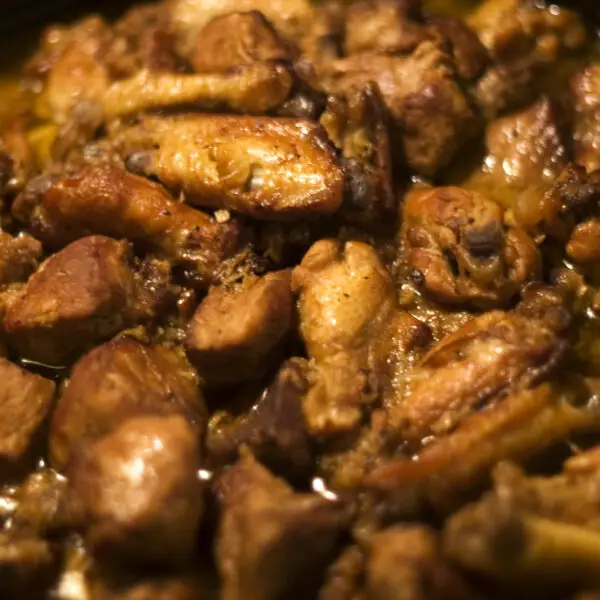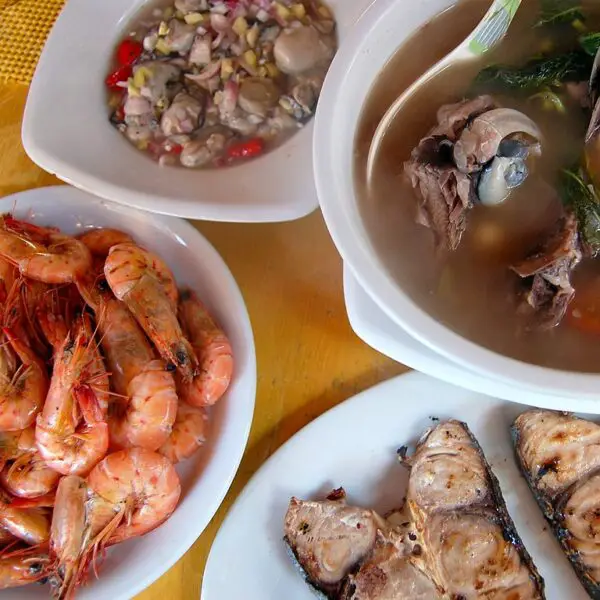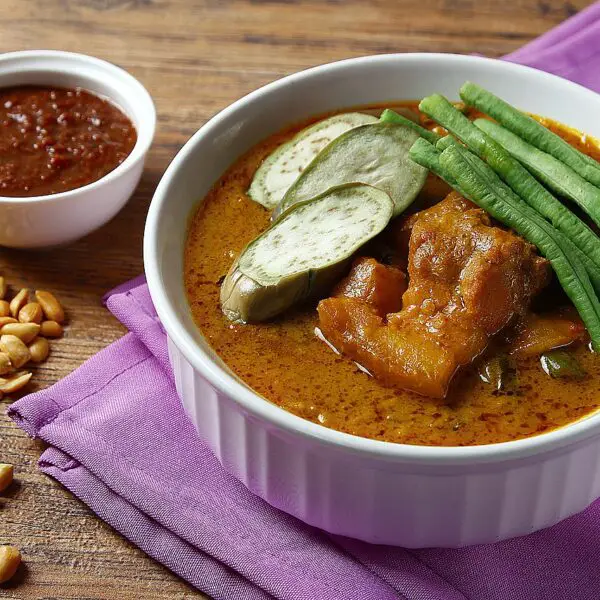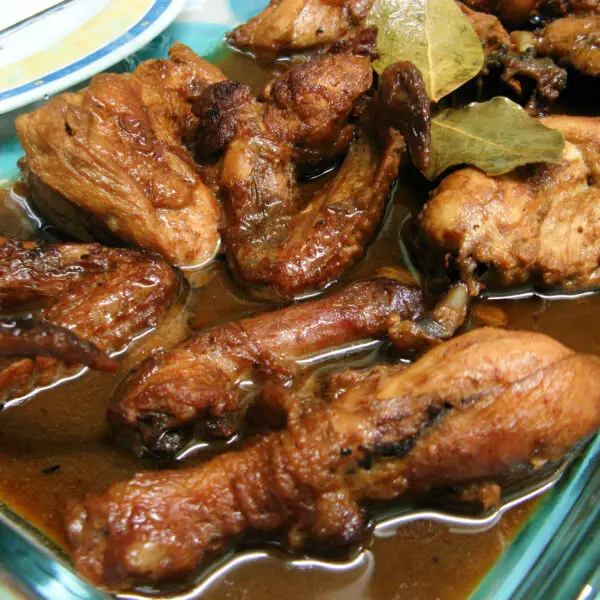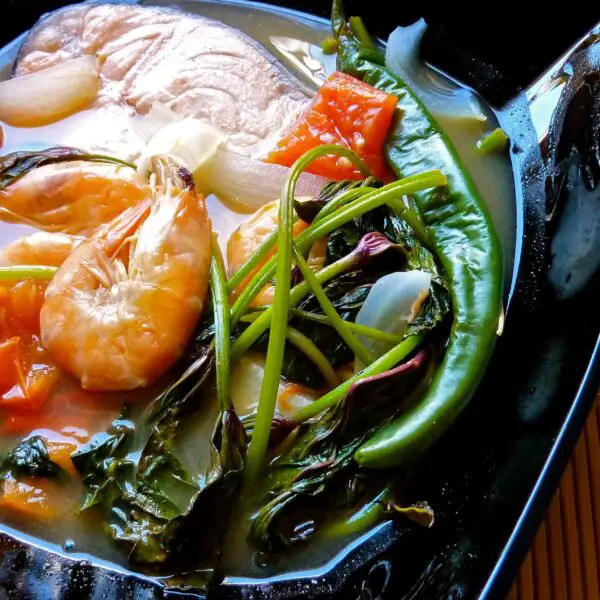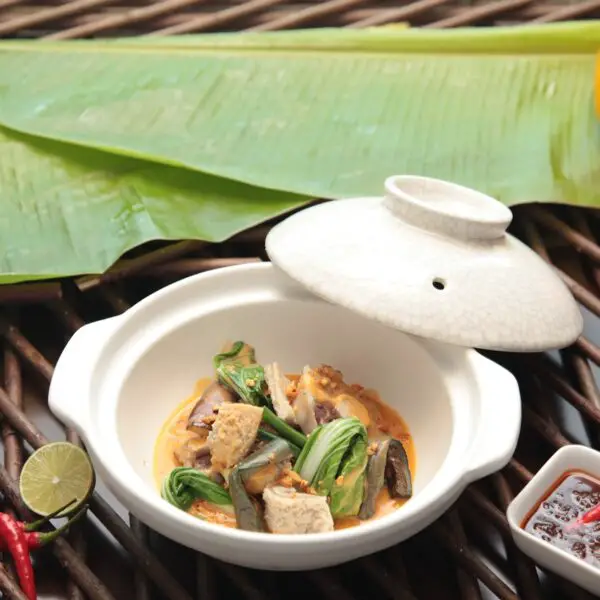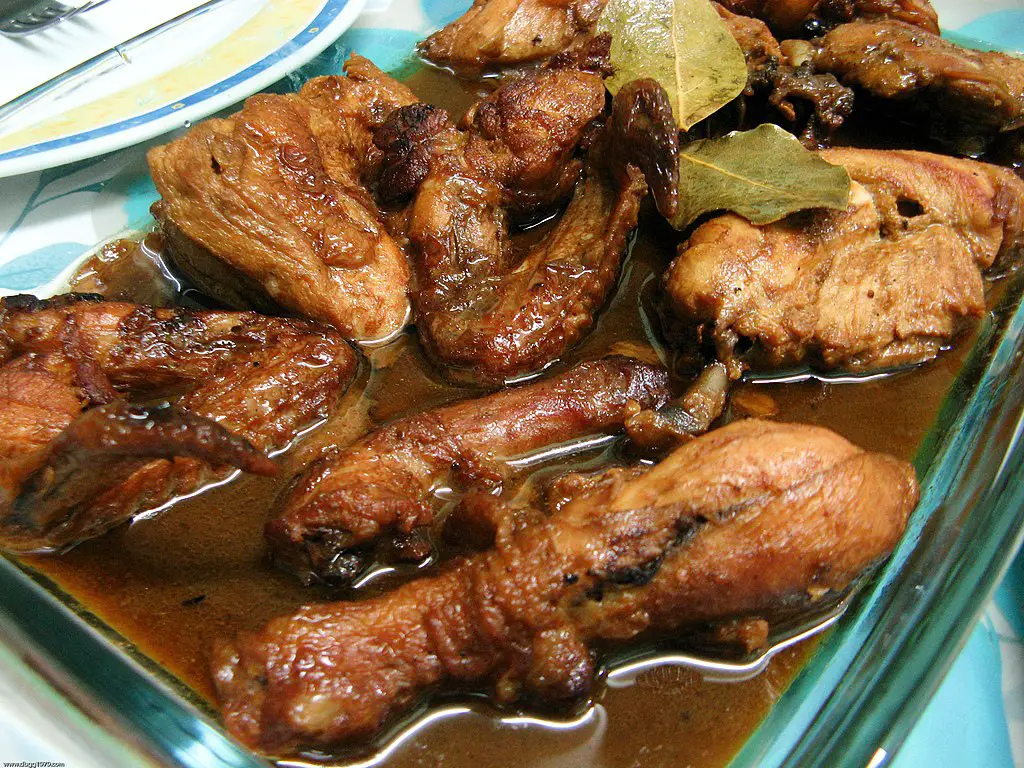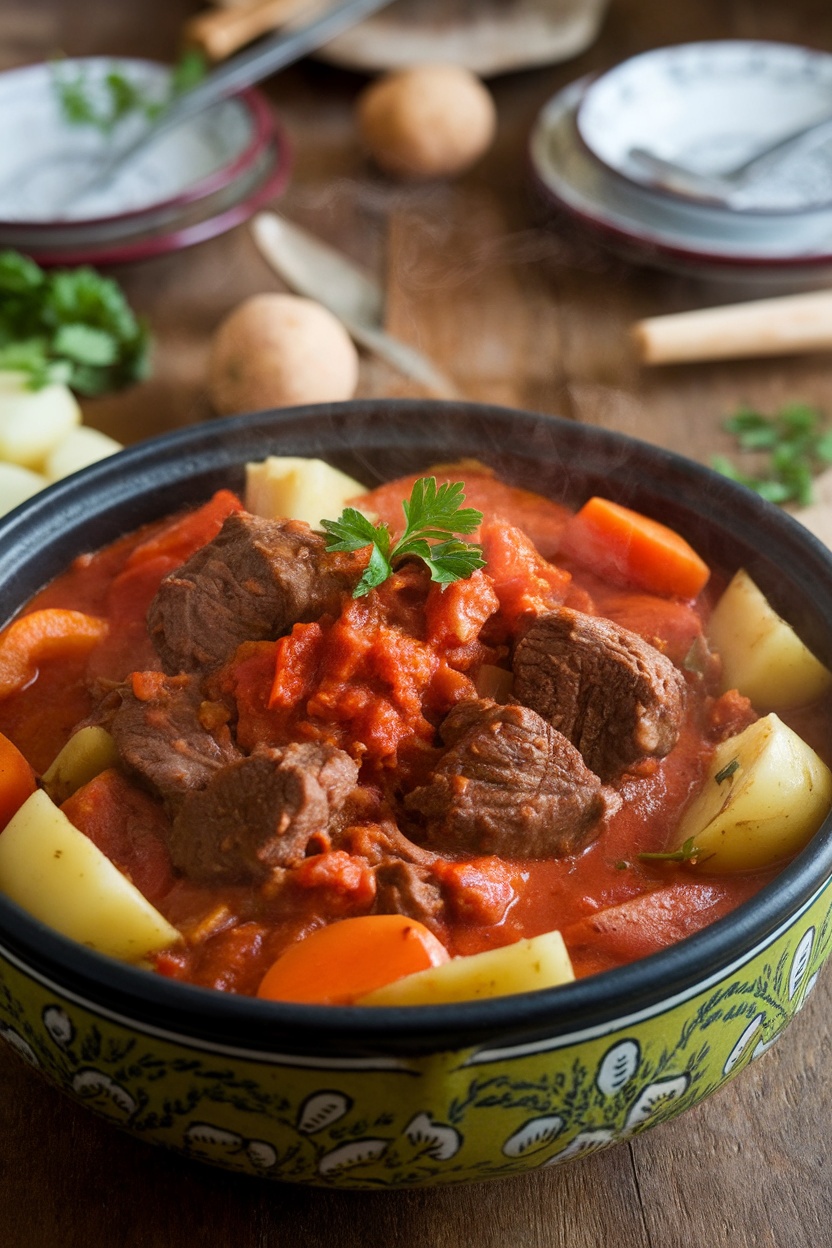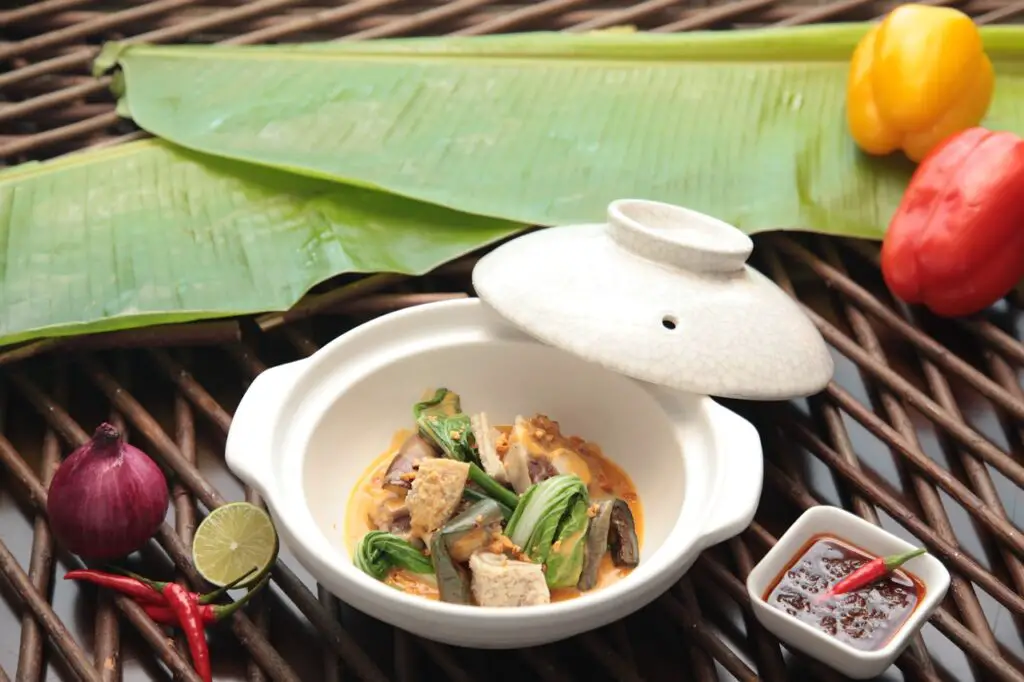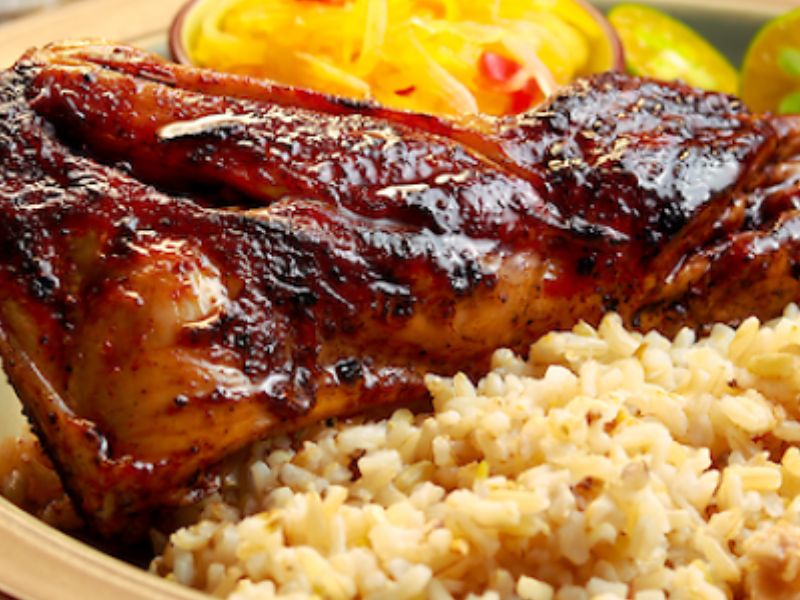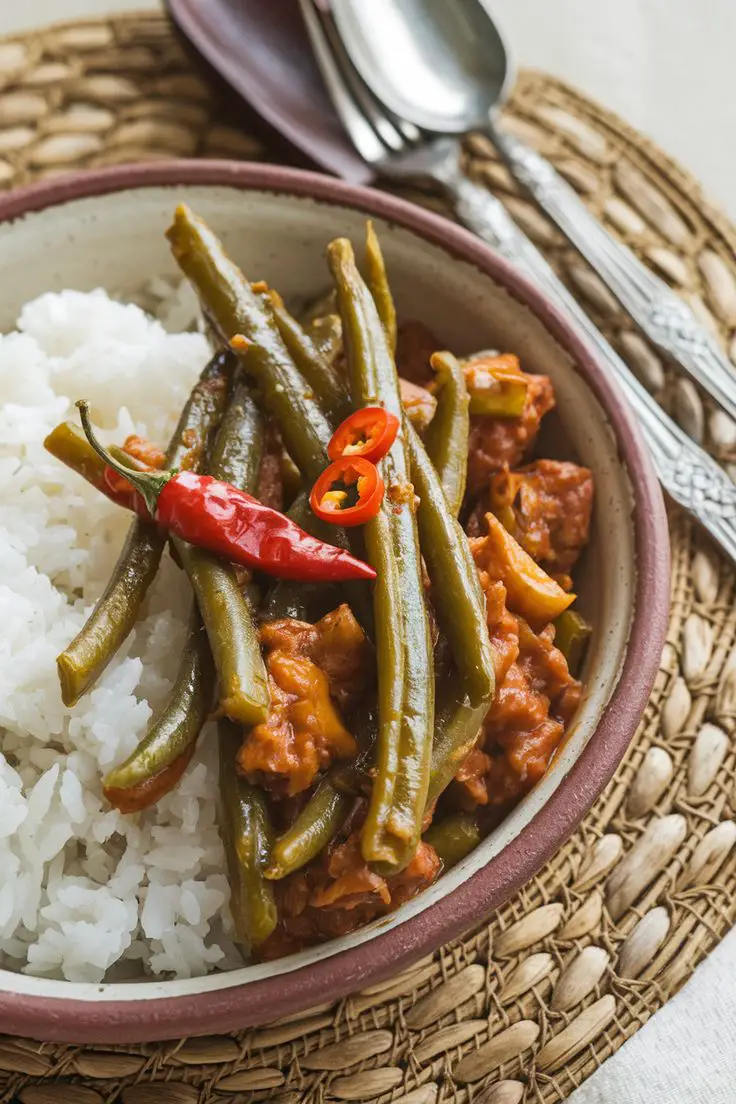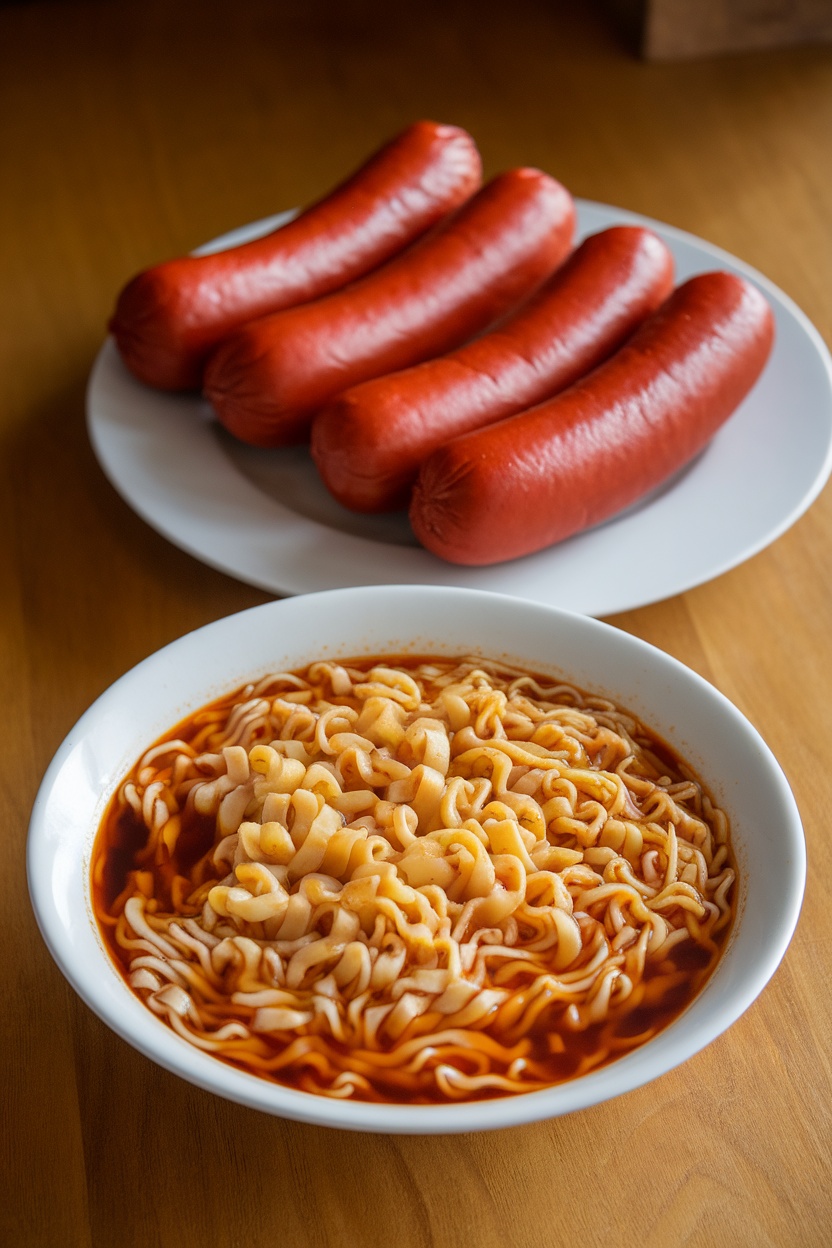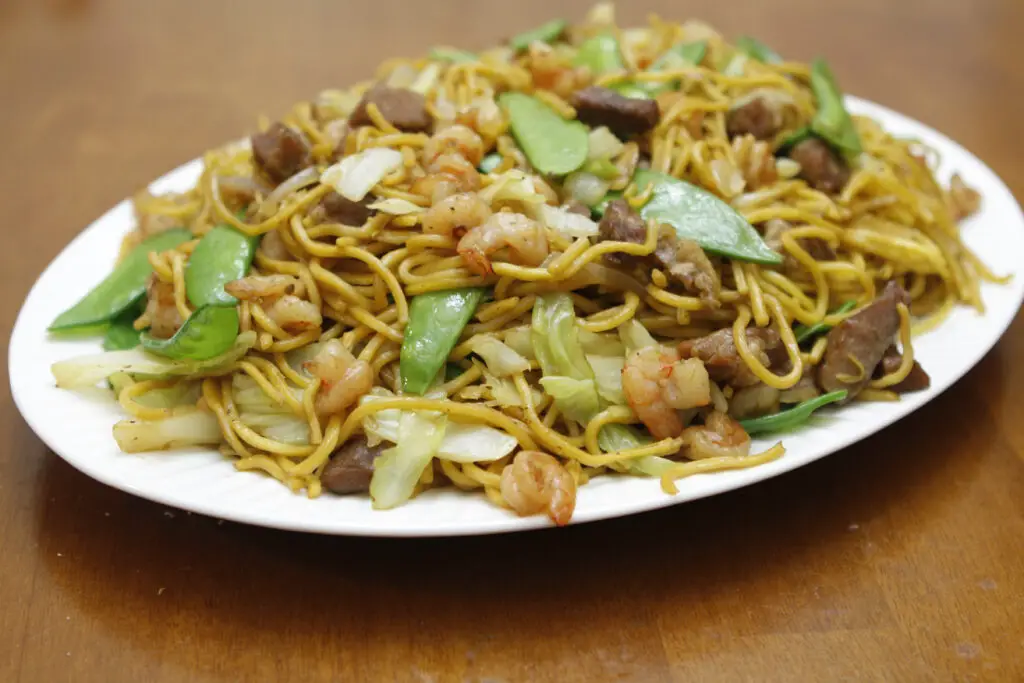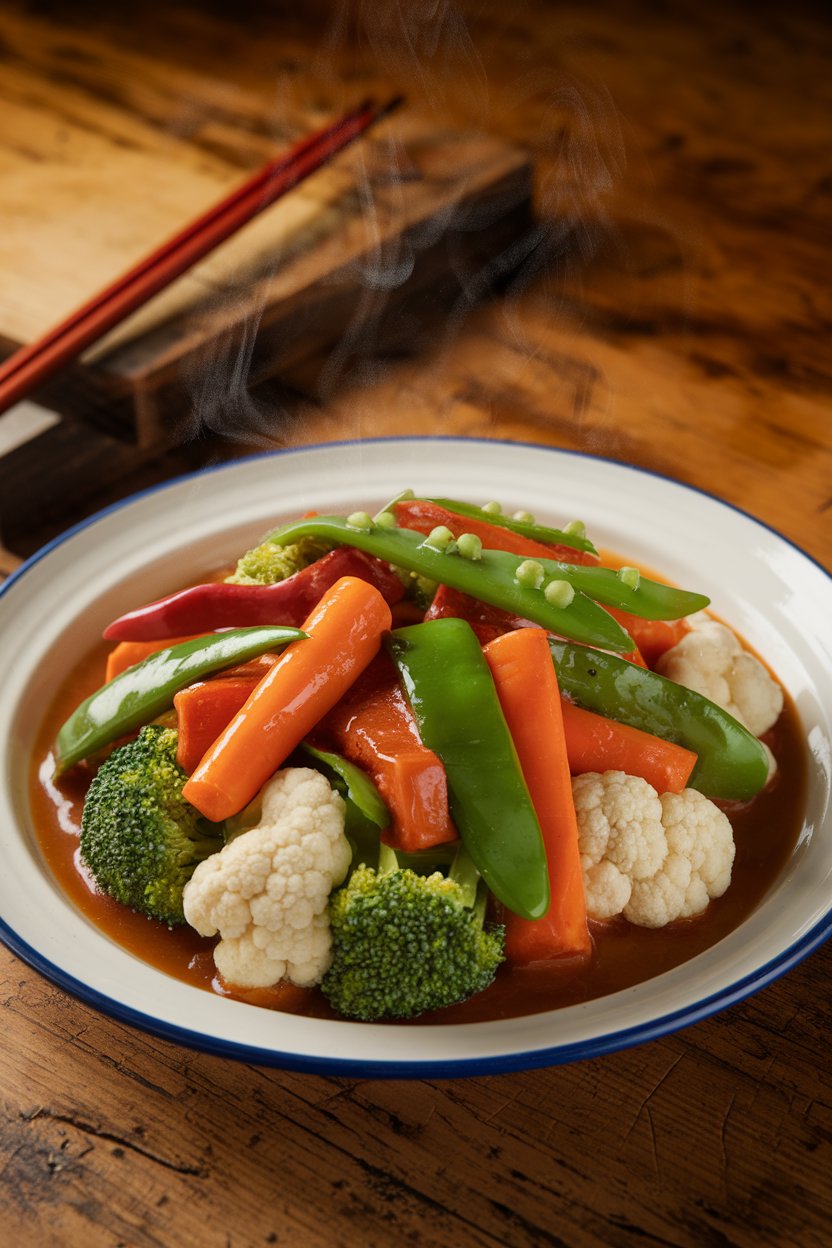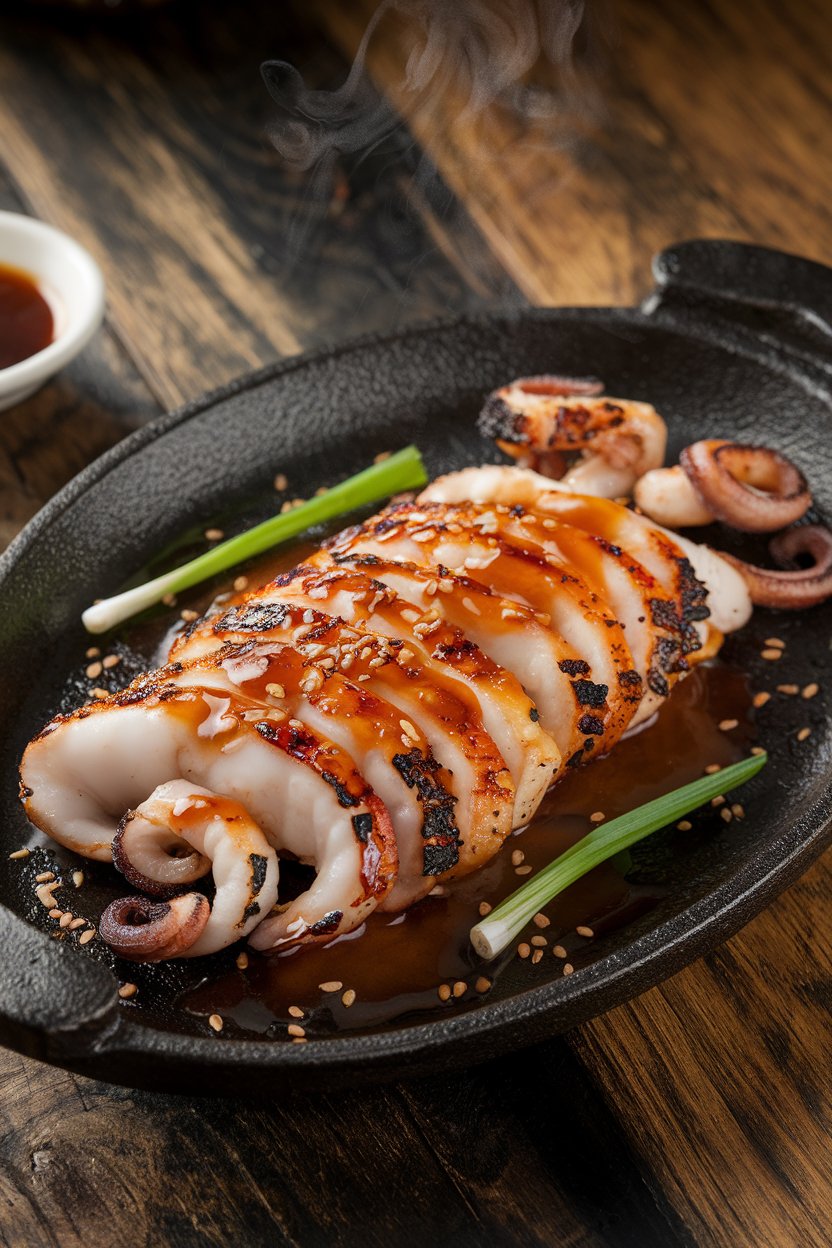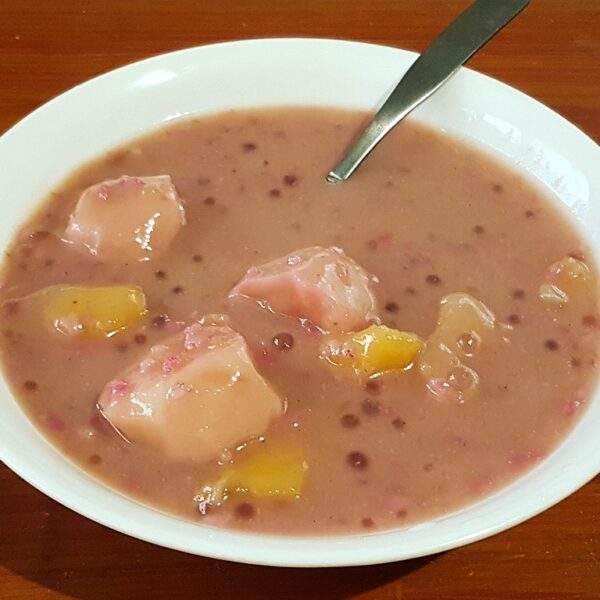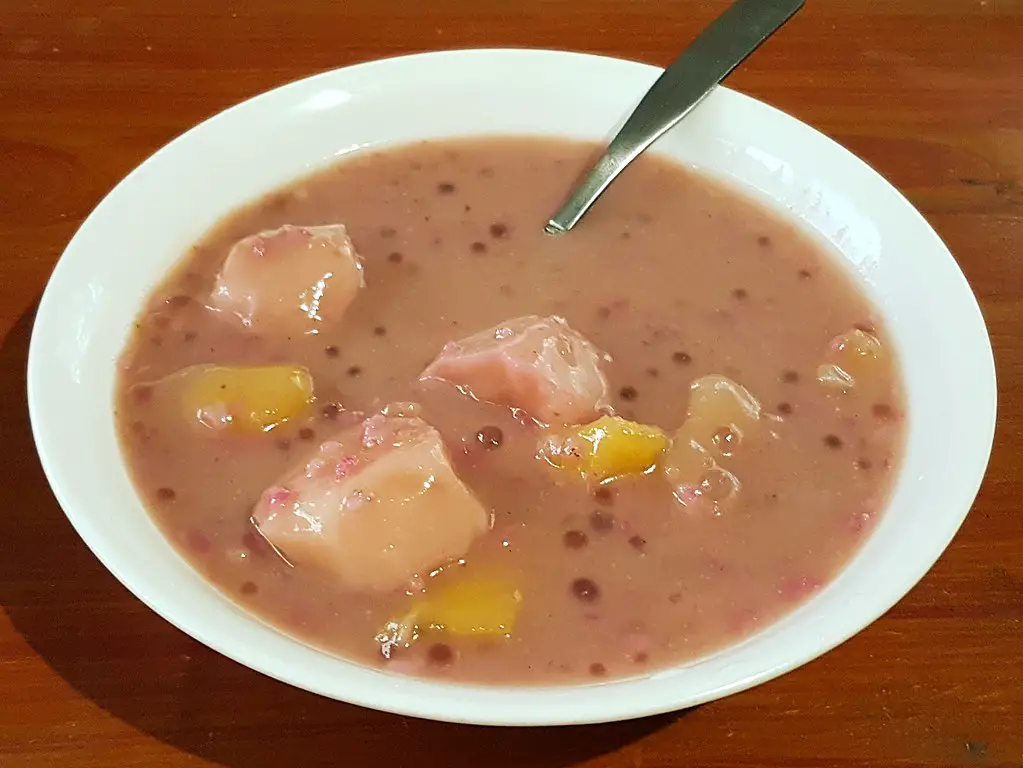Filipino adobo is a classic dish that offers an irresistible taste experience. Beloved by both locals and foreigners, this traditional favorite has a rich history and a unique combination of flavors that will leave you wanting more.
Adobo originated during the Spanish colonization of the Philippines and has evolved over time with the use of local ingredients and cooking techniques. The primary ingredients include meat, soy sauce, vinegar, garlic, and black pepper. The meat is marinated with the flavorful sauce and simmered until tender, resulting in a dish that is bursting with savory goodness.
The delicious flavors, versatility, and health benefits of adobo have earned it worldwide popularity. It can be enjoyed with rice, eggs, or used as a filling for tacos and sandwiches. So why not indulge in the mouthwatering taste of Filipino adobo and discover why it has become a global favorite?
Key Takeaways:
- Filipino adobo is a classic dish loved by both locals and foreigners
- It originated during the Spanish colonization of the Philippines and has evolved with local ingredients and techniques
- The primary ingredients include meat, soy sauce, vinegar, garlic, and black pepper
- Adobo is versatile and can be enjoyed with rice, eggs, or used as a filling for tacos and sandwiches
- It has gained worldwide popularity due to its delicious flavors and health benefits
The Origins of Filipino Adobo
The exact origin of adobo is uncertain, but it is believed to have been influenced by Spanish colonization in the Philippines. The name “adobo” comes from the Spanish word meaning to marinate or preserve with sauce. Filipinos adapted this cooking technique and created their own version of adobo using local ingredients and methods. Adobo has become deeply ingrained in Filipino culture and is now considered a traditional and iconic dish. It is often associated with social gatherings, celebrations, and a symbol of Filipino hospitality.
The Evolution of Adobo
During the Spanish colonization of the Philippines, the Spanish settlers introduced the concept of marinating meat in vinegar and spices as a preservation method. The local Filipinos embraced this technique and incorporated their own flavors and ingredients, such as soy sauce and garlic, to create adobo. Over time, adobo has evolved and adapted to different regional preferences, resulting in various versions of the dish throughout the country.
Adobo is not just a dish, it’s a reflection of our history, our heritage, and our resilience as a people. It represents the fusion of Spanish and Filipino influences, resulting in a dish that is uniquely Filipino.
Adobo has stood the test of time and remains a beloved dish in Filipino households. Its simple yet robust flavors, combined with its historical significance, make it a staple in Filipino cuisine. Whether enjoyed with rice, bread, or as a filling for tacos, adobo continues to be a symbol of Filipino culinary pride.
| Region | Characteristics |
|---|---|
| Bicol | Spicy adobo with chili peppers |
| Manila | Traditional adobo with a balance of soy sauce and vinegar |
| Visayas | Adobo with coconut milk for a creamy twist |
| Mindanao | Adobo with pineapple for a touch of sweetness |
These regional variations showcase the diversity and creativity of Filipino cuisine, highlighting how adobo has been adapted to suit different regional tastes and ingredients.
Ingredients and Cooking Methods of Adobo
Filipino adobo is known for its unique combination of flavors that create a savory and irresistible taste. Let’s dive into the key ingredients and cooking methods that make adobo a beloved dish in Filipino cuisine.
Ingredients
The primary ingredients in adobo include:
- Meat (typically chicken or pork)
- Soy sauce
- Vinegar
- Garlic
- Black pepper
Additional seasonings such as bay leaves, onions, and sugar may also be used to enhance the flavor. The combination of these ingredients gives adobo its signature tangy and slightly sweet taste.
Cooking Methods
Adobo can be cooked in various ways, but the most common method involves the following steps:
- Marinating the meat: The meat is marinated with the sauce (soy sauce, vinegar, garlic, and black pepper) for several hours or overnight. This allows the flavors to penetrate the meat and create a delicious marinade.
- Simmering: The marinated meat is then simmered until tender. This slow cooking process allows the flavors to meld together and results in a juicy and flavorful dish.
- Resting: After cooking, the adobo is often left to sit for a while to allow the flavors to develop further. This resting period enhances the taste and makes the dish even more delicious.
Adobo’s cooking methods can be adapted to personal preferences and regional variations, resulting in a diverse range of adobo styles across the Philippines.
| Ingredient | Amount |
|---|---|
| Chicken or pork | 1 kg |
| Soy sauce | 1/2 cup |
| Vinegar | 1/2 cup |
| Garlic | 6 cloves, minced |
| Black pepper | 1 teaspoon |
| Bay leaves | 2 pieces |
| Onion (optional) | 1 medium, sliced |
| Sugar (optional) | 1 tablespoon |
With its simple yet flavorful ingredients and versatile cooking methods, adobo has become a beloved dish that is enjoyed by people around the world.
Adobo: A Popular and Versatile Dish
Adobo is a global favorite that has garnered immense popularity for its irresistible taste and versatility. This traditional Filipino dish has captivated the palates of people worldwide, becoming a beloved culinary gem. Its unique combination of flavors, including the tanginess of vinegar, the saltiness of soy sauce, and the aroma of garlic, creates a mouthwatering experience that is hard to resist.
One of the reasons why adobo has gained widespread acclaim is its versatility. This dish can be adapted to suit various preferences and dietary restrictions. For vegetarians, adobo can easily be made by substituting meat with tofu or vegetables, without compromising its delicious flavor. Adobo can also be enjoyed with rice, eggs, or used as a filling for tacos and sandwiches. Its ability to be customized and enjoyed in different ways has made it a favorite among food enthusiasts around the world.
In addition to its delectable taste and versatility, adobo also offers several health benefits. The vinegar used in adobo acts as a natural preservative, making it a great choice for long-lasting meals. Garlic, a key ingredient in adobo, has antibacterial and anti-inflammatory properties, contributing to overall well-being. With its combination of lean protein, essential nutrients, and health-promoting ingredients, adobo is not just a flavorful dish but also a nutritious choice for individuals seeking a balanced diet.
Adobo’s popularity has been further boosted by the influence of Filipino chefs and food bloggers on social media.
The increasing popularity of adobo can also be attributed to the influence of Filipino chefs and food bloggers on social media platforms. Their captivating presentations and mouthwatering images of adobo have piqued the curiosity and appetite of people from different cultures and backgrounds. As a result, more and more individuals are discovering the delightful flavors and unique characteristics of adobo, further fueling its global appeal. Whether you are a fan of Filipino cuisine or simply looking to explore new flavors, adobo is a versatile and delicious dish that is sure to satisfy your taste buds.
Regional Variations of Adobo
Adobo, being a traditional Filipino dish, has regional variations that showcase the diversity and creativity of Filipino cuisine. In the Bicol region, one popular twist to adobo is the addition of chili peppers, creating a spicy adobo that offers an extra kick of heat. This variation appeals to those who enjoy a fiery and flavorful experience.
Another unique variation is Adobong Puti, also known as white adobo. Unlike the traditional adobo that uses soy sauce as a base, Adobong Puti relies solely on vinegar for its tangy and slightly sour taste. The absence of soy sauce gives this variant a lighter color and a unique flavor profile.
Adobo sa Gata is another regional twist that incorporates coconut milk into the dish. This variation adds a creamy and aromatic element to the classic flavors of adobo, making it a delightfully rich and indulgent option. The coconut milk complements the tanginess of the vinegar and creates a harmonious blend of flavors.
Regional Variations of Adobo
• Bicol Region – Spicy adobo with chili peppers
• Adobong Puti – White adobo with vinegar as the base
• Adobo sa Gata – Adobo with coconut milk
These regional variations of adobo highlight the versatility of the dish and reflect the different tastes and preferences found throughout the Philippines. Each variation offers a unique twist on the classic flavors of adobo, providing a diverse range of options to explore and enjoy.
| Regional Variation | Description |
|---|---|
| Bicol Region | Spicy adobo with chili peppers |
| Adobong Puti | White adobo with vinegar as the base |
| Adobo sa Gata | Adobo with coconut milk |
Health Benefits of Adobo
Adobo, the beloved Filipino dish, not only tantalizes the taste buds but also offers a range of health benefits. This delectable dish is a great source of lean protein, which is essential for muscle growth and repair. Whether you choose chicken or pork as your protein base, adobo provides a satisfying and nutritious meal.
One of the key ingredients in adobo is garlic, which not only adds flavor but also boasts antibacterial and anti-inflammatory properties. Garlic has been used for centuries for its medicinal properties, helping to boost the immune system and promote overall well-being.
In addition to the protein and garlic, adobo is packed with essential nutrients such as iron and B vitamins. Iron is crucial for the production of red blood cells and carrying oxygen throughout the body. B vitamins play a vital role in energy production and maintaining a healthy nervous system.
| Health Benefits of Adobo: | Key Ingredients: |
|---|---|
| Source of Lean Protein | Chicken or Pork |
| Antibacterial and Anti-inflammatory Properties | Garlic |
| Essential Nutrients – Iron and B Vitamins | Meat, Soy Sauce, Vinegar |
By incorporating adobo into your diet, you can savor the flavors while reaping the health benefits. It’s important to note that moderation is key, as excessive consumption of any dish may lead to health issues. So, indulge in this culinary delight and enjoy the delightful taste and nutritional goodness of adobo!
Conclusion
Filipino adobo is truly a culinary gem that has captivated the taste buds of people around the world. With its rich history, unique flavors, and versatility, it has earned its place as a global favorite. Whether you are a fan of Filipino cuisine or simply looking to try new flavors, adobo is a must-try dish that will leave you craving for more.
The irresistible taste of adobo lies in its combination of savory, tangy, and slightly sweet flavors. Each bite offers a delightful explosion of flavors that is both satisfying and addictive. It is no wonder that adobo has become a beloved dish and a symbol of Filipino culinary heritage.
Furthermore, adobo not only pleases the palate but also offers health benefits. Packed with lean protein, essential nutrients, and the natural preservative properties of vinegar, adobo can be a nutritious addition to your diet. Its use of garlic, known for its antibacterial and anti-inflammatory properties, adds an extra boost of health benefits.
So, whether you choose to enjoy the classic Filipino adobo or explore the regional variations, you are in for a treat. Prepare to be delighted by the culinary masterpiece that is Filipino adobo, a dish that truly deserves its status as a global favorite.
FAQ
What is Filipino adobo?
Filipino adobo is a traditional dish that originated during the Spanish colonization of the Philippines. It is a savory dish made with meat, soy sauce, vinegar, garlic, and black pepper.
How is adobo cooked?
Adobo is typically cooked by marinating the meat with the sauce and then simmering it until tender. The meat is usually marinated for several hours or overnight to allow the flavors to meld together.
What makes adobo so popular?
Adobo has gained worldwide popularity due to its unique combination of flavors, versatility, and health benefits. The tanginess of vinegar, saltiness of soy sauce, and aroma of garlic create a mouthwatering experience that is hard to resist.
Are there different variations of adobo?
What are the health benefits of adobo?
Why should I try Filipino adobo?
Filipino adobo is a culinary gem that offers an irresistible taste. Its rich history, unique flavors, and versatility make it a beloved dish that satisfies both the palate and the body.
